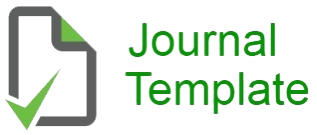THE INFLUENCE OF THE FRAUD DIAMOND PERSPECTIVE ON FINANCIAL STATEMENT FRAUD IN LPDS IN MENDOYO SUB-DISTRICT
Keywords:
Financial Statement Fraud, Pressure, Opportunity, Rationalization, Capability, Fraud Diamond TheoryAbstract
This research aims to determine the influence of pressure, opportunity, rationalization and capability on financial statement fraud. This research was conducted at the LPD in Mendoyo Sub-district. The sampling method used was non-probability sampling with a purposive sampling technique, so that a total of 76 samples were obtained. The data in this study were analyzed using multiple linear regression analysis techniques using the SPSS version 25 program. The results of this study show that pressure has a negative effect on financial statement fraud, opportunity has a positive effect on financial report fraud, rationalization has no effect on financial report fraud, and capability has an effect negative on financial statement fraud. This research provides a contribution for various parties as material for consideration of factors that can influence the occurrence of fraudulent financial statements.
References
Alvionika, P., & Meiranto, W. (2021). BASED ON FRAUD DIAMOND THEORY (Empirical Study of Banking Companies Listed on the IDX 2015-2019). 10(4), 1–12.
Aprilia, S.R.N.A., & Furqani, A. (2021). Detection of Financial Statement Fraud Using the Fraud Diamond Method in Service Companies. Journal of Accounting And Financial Issues, 2(2), 1–11.
Association of Certified Fraud Examiners (ACFE). (2022). Occupational Fraud 2022: A Report to the nations. Association of Certified Fraud Examiners, 1–96.
Avortri, C., & Agbanyo, R. (2021). Determinants of management fraud in the banking sector of Ghana: the perspective of the diamond fraud theory. Journal of Financial Crime, 28(1), 142–155. https://doi.org/10.1108/JFC-06-2020-0102
Deasri, N.K.D., & Utama, I.M.K. (2022). Internal Control, Organizational Commitment, Suitcapability of Compensation and Tendencies in Accounting Fraud. Accounting E-Journal, 32(8), 2105. https://doi.org/10.24843/eja.2022.v32.i08.p11
Dewi, G.A.R., & Pertama, G.A.W. (2020). Diamond fraud and its impact. Scientific Journal of Accounting and Business, 5(2), 27–46. http://journal.undiknas.ac.id/index.php/akuntansi/article/view/2469
Haqq, A.P.N.A., & Budiwitjaksono, G.S. (2020). Analysis of pentagon fraud theory as a fraud detector in financial reports. Journal of Economics, Business, & Accountancy Ventures, 22(3), 319–332. https://doi.org/10.14414/jebav.v22i3.1788
Istifada, R.U., & Senjani, Y.P. (2020). Religiosity as the moderating effect of diamond fraud and personal ethics on fraud tendencies. Journal of Islamic Accounting and Finance Research, 2(1), 91–116. https://doi.org/10.21580/jiafr.2020.2.1.4721
Jensen, M. C., & Meckling, W. H. (1976). Theory of the Firm: Managerial Behavior, Agency Costs and Ownership Structure. Journal of Financial Economics, 3(4), 305–360. https://doi.org/10.1177/0018726718812602
Kurniasari, T.W. (2021). Legal Strength of Hindu Traditional Financial Institutions (Village Credit Institutions/LPD): One of the Economic Strengtheners in the Informal Sector in Bali. REUSAM: Journal of Legal Studies, 9(2), 1–14. https://doi.org/10.29103/reusam.v9i2.6651
Lamawitak, P.L., & Goo, E.E.K. (2021). The Influence of Fraud Diamond Theory on Fraud in the Pintu Air Credit Cooperative. Journal of Accounting Economic Research (JENSI), 5(1), 56–67. https://doi.org/10.33059/jensi.v5i1.3620
Mahottama, K.M.A., Budiartha, I.N.P., & Ujiti, N.M.P. (2022). Imposition of Customary Sanctions for Perpetrators of Criminal Abuses of Financial Authority at the Tuwed Village Credit Institution (LPD). Journal of Construction Law, 3(2), 234–239.
Mentari, R.A., & Sopian. (2022). Fraud Diamond for Detection of Financial Statement Misrepresentation in the Manufacturing Industry. Research In Management and Accounting, 5(2), 68–92. https://doi.org/10.33508/rima.v5i2.4005
Mertayasa, K.B., & Masdiantini, P.R. (2022). Analysis of the Occurrence of Fraud at the Village Credit Institution (LPD) in Pakraman Tamblang Village. 12(1), 118–126.
Nadia, N., Nugraha, N., & Sartono, S. (2023). Analysis of the Influence of Diamond Fraud on Fraudulent Financial Statements in Sharia Commercial Banks. Journal of Accounting and Governance, 3(2), 125. https://doi.org/10.24853/jago.3.2.125-139
Noble, M.R. (2019). Fraud diamond analysis in detecting financial statement fraud. The Indonesian Accounting Review, 9(2), 121. https://doi.org/10.14414/tiar.v9i2.1632
Pamungkas, M., & Putri, E. (2023). Financial Statement Fraud Detection Using Diamond Theory Analysis and Covid-19. The International Journal of Business Management and Technology, 7(1), 1–11.
Putri, N.S., & Januarti, I. (2023). Fraud Diamond Perspective in Detecting Possible Financial Statement Fraud. 33(3), 619–633. https://doi.org/10.24843/EJA.2023.v33.i03.p03
Putri, N.W.A., & Suartana, I.W. (2022). Factors that Influence the Tendency of Accounting Fraud in LPDs in Badung Regency: The Role of Internal Control Effectiveness. Accounting E-Journal, 32(1), 3314. https://doi.org/10.24843/eja.2022.v32.i01.p01
Sugiyono, P.D. (2015). Sugiyono Quantitative Research Methods. Alphabeta Publishers.
Sunardi, & Amin, M.N (2018). Fraud detection of financial statements using fraud diamond perspective. International Journal of Development and Sustaincapability, 7(3), 878–891. www.isdsnet.com/ijds
Suparmini, N.K., Ariyanto, D., & Wistawan, I.M.A.P. (2020). Testing Fraud Diamond Theory on Indications of Financial Statement Fraud in Indonesia. e-Journal of Accounting, 30(6), 1441–1457.
Suripto, & Karmilah. (2021). the Influence of the Audit Committee and Fraud Diamond. International Journal of Economics, Business and Accounting Research (IJEBAR), 2021(3), 1–22.
Tinay, A., Karamoy, H., & Sondakh, J. J. (2022). Fraud Tendency Analysis. Journal of Accounting and Auditing Research, 3(2), 216–234. https://ejournal.unsrat.ac.id/v3/index.php/goodwill/article/view/45790/41054
Widyawati, S.R., & Widnyana, I.W. (2022). Research in Business & Social Science Role of forensic accounting in the diamond model relationship to detect the financial statement fraud. Research in Business & Social Science IJRBS, 11(6), 402–409. https://doi.org/10.20525/ijrbs.v11i6.1924
Wirakusuma, I.G.B., & Setiawan, P.E. (2019). The Influence of Internal Control, Competence and Locus of Control on the Tendency of Accounting Fraud. 26(2), 1545–1569. https://doi.org/https://doi.org/10.24843/EJA.2019.v26.i02.p26
Wolfe, D.T., & Hermanson, D.R. (2004). The Fraud Diamond: Considering the Four Elements of Fraud. The CPA Journal, 74(12), 38–42.
Downloads
Published
Issue
Section
License
Copyright (c) 2024 INTERNATIONAL JOURNAL OF ECONOMIC LITERATURE

This work is licensed under a Creative Commons Attribution-NonCommercial-ShareAlike 4.0 International License.
INTERNATIONAL JOURNAL OF ECONOMIC LITERATURE © 2023 by Adisam Publisher is licensed under CC BY-SA 4.0







